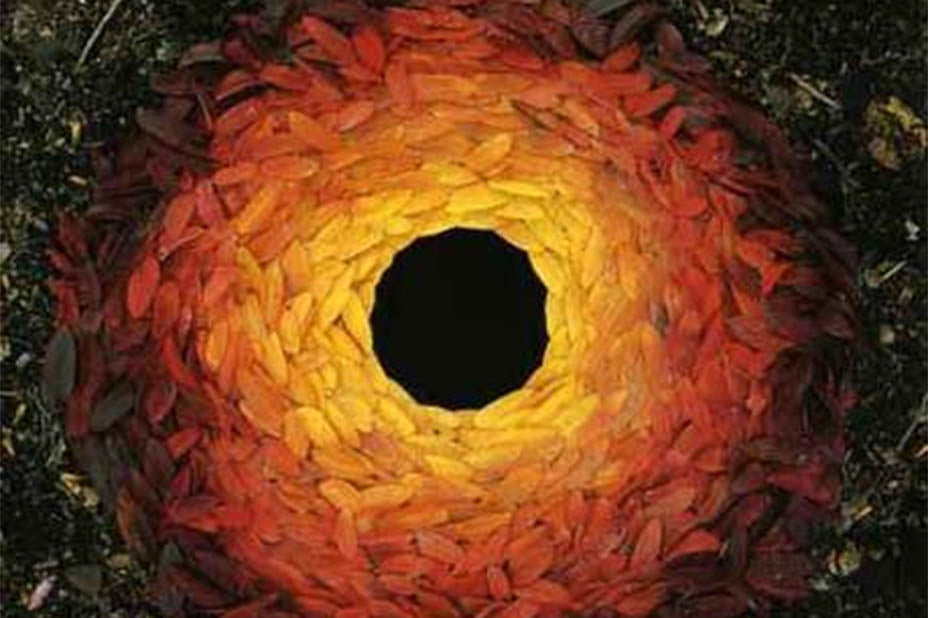Most of you reading this have likely heard of the shockingly original British sculptor Andy Goldsworthy, known best for his ephemeral works that use natural materials like stones, leaves, branches, flowers, and whatever else catches his eye. His works typically exist only briefly, sometimes for just a few minutes, before they are set free back into the natural world from whence they came. If you've never seen the documentary about his life and work, Rivers and Tides, prepare yourself for 94 minutes of pure bliss.
Goldsworthy's work is the embodiment of a Japanese aethetic ideal known as mono no aware, the awareness of impermanence and how nothing, ultimately, lasts very long. It evokes a kind of wistfulness, but also a quiet elation, as if you've stumbled on to truth, in real time.
The most famous example of mono no aware in action is the annual cherry blossom celebrations that occur in parks all over Japan every April, when the blossoms are, ever so briefly, in their full-bloom glory. People sit on mats in the park, surrounded by vast pink carpets of blossoms drinking booze and tea. You can hear a lot of singing and laughter. Everyone's sad the blossoms only last a few days but happy to be there, celebrating them.
I often think about mono no aware when prepping and drinking a tumbler of matcha. In a way, it's the ultimate ephemerality, in that it's appreciated for its beauty, briefly, and then it disappears. Straight from the earth, which you really can taste, into your body -- a truly great connection to the earth. Consumable, green art.
There’s so much pleasure to be had in the symbolism of delighting in something that goes away.
